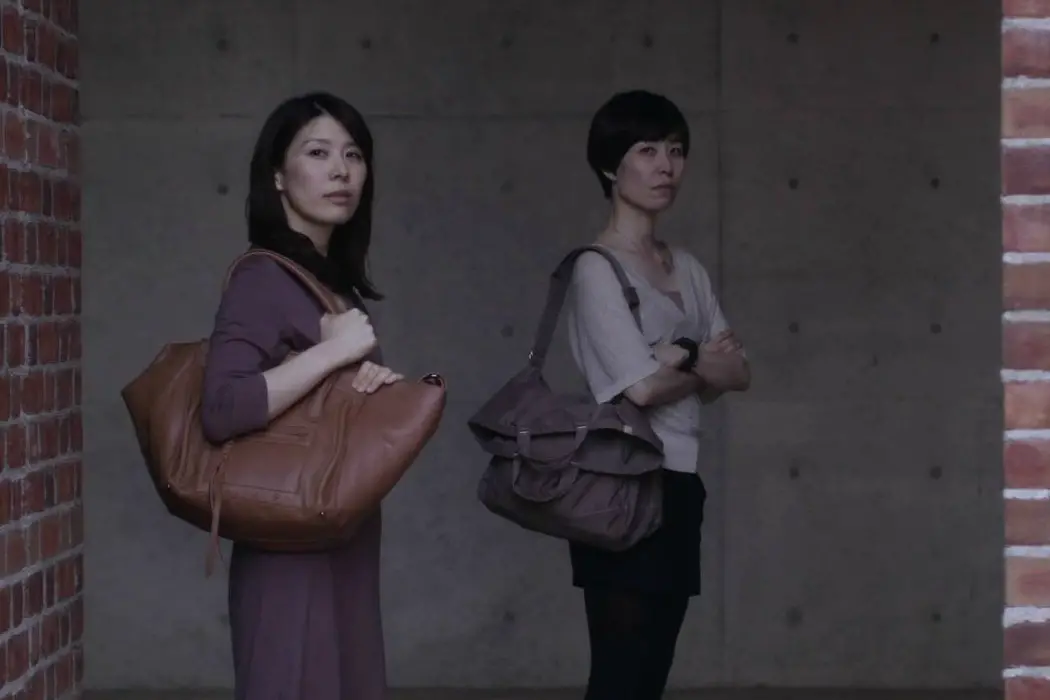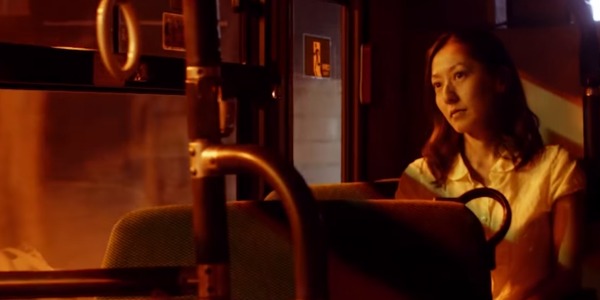HAPPY HOUR: Leaves No Stone Unturned

Ben is a former student of cognitive science who is…
Ryusuke Hamaguchi‘s Happy Hour builds its five hours and seventeen minutes largely out of conversations. We often find the characters discuss their problems at home or at work and relating those problems to wandering thoughts that occur to them while they talk. They’ll do this for 10 or 20 minutes before the film moves on to a new setting. There are plenty of scenes depicting wordless leisure, workplace drama, or legal conflicts, but Happy Hour‘s texture is born mainly in conversations: the tones of the characters’ voice, where they’re sitting, how their faces are lit, and what unspoken details emerge in their body language.
The topics of these conversations range from personal beliefs to self-care advice to politics. Happy Hour does not give any one of these topics more importance than another. Rather, it follows them as topics that happen to arise in the everyday lives of four 38-year-old women named Akari (Sachie Tanaka), Jun (Rira Kawamura), Sakurako (Hazuki Kikuchi), and Fumi (Maiko Mihara).
This is not to suggest that everything that happens in Happy Hour is mundane – the guest artists who present at Fumi’s workplace and Jun’s effort to divorce her husband are beyond the realm of what most people would consider routine. But everything eventually passes and develops into something else. Happy Hour‘s extreme length is worth sitting through not to reach a climax, but to marvel at the subtle movement of social reorganization that takes place throughout.
Friends and Family
Though the various conversation topics have equal importance, Happy Hour has focus: each character’s story contains some element of domestic division. Jun’s pending divorce is arguably the most prominent, but there’s also Fumi’s vaguely troubled relationship with her own husband, and Sakurako struggling to manage her teenage son. As for Akari, the film shows us her work life more than her home life, but we do learn that she has a history of divorce as well.
This through-line acts as a complement to the way the characters behave depending on where they are and who they’re with. Sometimes they’re comfortable and playful; sometimes they self-monitor, restricting themselves for the sake of politeness; sometimes they’re brutally honest. Though there’s some friction between the four main characters, their interactions among themselves are generally the most amicable and unforced.

Watching the conversations in Happy Hour unfold provides a lesson in making very subtle delineations between modes of behavior. Superficial politeness vs. thoughtfulness. Deepening relations vs. conformity. Harsh truths revealed out of hostility vs. harsh truths revealed out of concern. All kinds of murky differences are clarified in the constant shifting of the social groups depicted in the film.
The combination of these differences in relationships and Happy Hour‘s recurring theme of domestic dissolution implies both a need and a potential for change. Moreover, it’s all contextualized by environmental crisis, the characters’ gripes about their traditional obligations, and the issue of Japan’s aging population. Such things are referenced only briefly, but they do well to establish modern Japan as a backdrop for the currents of change that define Happy Hour.
City Lights
What Happy Hour articulates through details of behavior it also articulates cinematically. The connections between emotional well-being, relationships, and setting are articulated in cuts away from personal problems to the elaborate network of roads and lights that compose the city at night. Sometimes, in brief scenes following tense or awkward conversations, moments of peace or camaraderie are accented with color or light breaking into view.

In one montage depicting leisure time, the film cuts from the motion of a seal swimming past the glass at a zoo to the similarly flowing motion of a kite flown by children. The relation between adult leisure and the pleasures of children recalls a comparison made earlier in the film: a guest artist comes to Fumi’s workplace to give a strange exercise lesson that involves a lot of interpersonal physical contact; later, Akari diffuses the awkwardness of this by saying it reminds her of children’s games in the vein of patty-cake.
This is another way Happy Hour interlaces the potential for change and the fragility of the social sphere. And considering where the film ends up, it amounts to a persuasive affirmation of the main characters’ friendship. Though the film finds many ways to put them to the test over the course of its five-hour run time, Akari, Jun, Sakurako, and Fumi still find that they have a place with each other.
To Conclude: Happy Hour
Some viewers may be sceptical about sitting through Happy Hour‘s whole length in one sitting – and indeed, some screenings were separated into two parts – but it’s worth it to see how the film leaves no stone unturned in its examination of different aspects of social life in its milieu. And unlike many films of such length, it’s easy to follow thanks to its relatively small cast and the way it straightforwardly airs everything out. It’s worth putting aside the time to see how Happy Hour excels in every way a narrative film can.
Do you sympathize with Happy Hour‘s portrayal of adult friendship? If you come from a non-Japanese culture, how do you relate to it? Tell us your thoughts below!
Happy Hour was released in 2015 and played on MUBI or a limited period of time.
Does content like this matter to you?
Become a Member and support film journalism. Unlock access to all of Film Inquiry`s great articles. Join a community of like-minded readers who are passionate about cinema - get access to our private members Network, give back to independent filmmakers, and more.
Ben is a former student of cognitive science who is currently trying to improve his writing style and ability to understand and appreciate films containing unfamiliar perspectives. He tries not to hold films to a strict set of criteria, but does believe that strong movies can change your outlook on the world. His favorite films include Whisper of the Heart, Hellzapoppin', Foolish Wives, 42nd Street, and the work of Charlie Chaplin.













